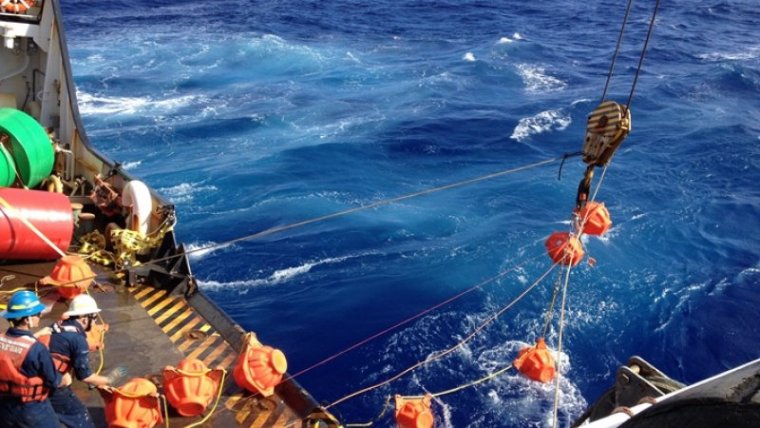| News / Science News |
Seven miles deep, the ocean is still a noisy place
NOAA | MARCH 25, 2016
For what may be the first time, NOAA and partner scientists eavesdropped on the deepest part of the world’s ocean and instead of finding a sea of silence, discovered a cacophony of sounds both natural and caused by humans.

Hauling up hydrophone during the Challenger Deep mission in 2015. ![]()
For three weeks, a titanium-encased hydrophone recorded ambient noise from the ocean floor at a depth of more than 36,000 feet, or 7 miles, in the Challenger Deep trough in the Mariana Trench near Micronesia. Researchers from NOAA, Oregon State University, and the U.S. Coast Guard were surprised by how much they heard.
The ambient sound field is dominated by the sound of earthquakes, both near and far, as well as distinct moans of baleen whales, and the clamor of a category 4 typhoon that just happened to pass overhead. The hydrophone also picked up sound from ship propellers.
The project was designed to establish a baseline for ambient noise in the deepest part of the Pacific Ocean. Human-created noise has increased steadily in recent decades and getting these first recordings allows scientists in the future to determine if the noise levels are growing and how this might affect marine animals that use sound to communicate, navigate and feed, such as whales, dolphins and fish.
YOU MAY ALSO LIKE


